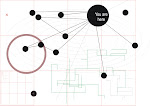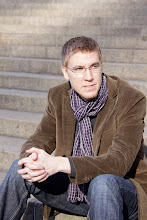 Yet, even this novice could, and can still on occasion, tell time from the lighting, color of sky and shadow peculiar to that of Iowa. I also can recognize qualitative differences in soil. My favorites were the piles that collected on the fenders of my father’s orange Case tractor and at the foot of the giant diesel tank on the yard. It was more silt than soil. A fine powder mingled with oil. It felt like silk in my hands.
Yet, even this novice could, and can still on occasion, tell time from the lighting, color of sky and shadow peculiar to that of Iowa. I also can recognize qualitative differences in soil. My favorites were the piles that collected on the fenders of my father’s orange Case tractor and at the foot of the giant diesel tank on the yard. It was more silt than soil. A fine powder mingled with oil. It felt like silk in my hands.That soil, airborne during disking and harvest, tints our skies, blankets all cars, seeps into our homes. This rural land of dirt and dust rising into the atmosphere, through the suns’ last glancing blows of the day, turns harvest skies brilliant hues of reds to match the
 autumn leaves. It surrounds us, clings to the sweat on our arms and legs, gets under our fingernails, collects in our nostrils and becomes grit in our teeth. This dirt becomes one with its residents. This land which we till, plant, cultivate, and harvest from is also the formative lands in which mid-western society and humanity grows from alongside the beans and corn. We too are planted, sending roots down, to draw upon the deeper reserves of nutrients of past communities. We are nurtured in the stories of family and ancestors. As wine and coffee both bear out the flavors from the surrounding environment our fruit too bears witness to our roots…our history…the ground in which we were raised. It is inescapable. Daily life forms us.
autumn leaves. It surrounds us, clings to the sweat on our arms and legs, gets under our fingernails, collects in our nostrils and becomes grit in our teeth. This dirt becomes one with its residents. This land which we till, plant, cultivate, and harvest from is also the formative lands in which mid-western society and humanity grows from alongside the beans and corn. We too are planted, sending roots down, to draw upon the deeper reserves of nutrients of past communities. We are nurtured in the stories of family and ancestors. As wine and coffee both bear out the flavors from the surrounding environment our fruit too bears witness to our roots…our history…the ground in which we were raised. It is inescapable. Daily life forms us.Perhaps Shoeless Joe Jackson in Field of Dreams was right to ask, “Is this heaven?” “No, it’s Iowa.” The cynics and residents of the surrounding states take pleasure in their interpretation that if Iowa is not heaven, then it must be hell. Yet for those who love Iowa, the rolling farmland of my native northwest Iowa contain both the meaning of and means of general revelation. Its disclosures are gentle and constant. There are no cavernous depths or fluttering heights, torrential rivers occur rarely. Life processes through a land of climatic extremes. Farmers mark time by their crops and we are all made into people of prayer on their behalf. Seasons can pass almost imperceptibly into the next, or with the ever present wind, blow in over night. Communities are cultivated to understand protection and preservation, guidance and adaptability; as well as the disparity between needs and wants, safety and carelessness, frugality and lavishness.
Moderation is the geo-proverbial motto of the Midwest. This worn temperance comes from the solidity of the land itself. Time and seasons pass as a four step dance where fashions follow suit, yet the land steadily holds giving life its truest visible reality.
In northwest Iowa, the bright threads of John Calvin and Reformed theology are among the
 most tightly woven into the fabric of this society. Faith may not always accompany the religiosity and morality the area promotes, and legalism is often chosen over grace. Yet this area and its traditions, despite all its hypocrisy and stark walled churches; have been my home and community. From the annual celebration of our Dutch heritage, which marks the transition from spring to summer, families live into the lives and work of their American and European ancestors so that they too will be passed on to future generations. It is a profound rehearsal of our collective and living memory.
most tightly woven into the fabric of this society. Faith may not always accompany the religiosity and morality the area promotes, and legalism is often chosen over grace. Yet this area and its traditions, despite all its hypocrisy and stark walled churches; have been my home and community. From the annual celebration of our Dutch heritage, which marks the transition from spring to summer, families live into the lives and work of their American and European ancestors so that they too will be passed on to future generations. It is a profound rehearsal of our collective and living memory.Yet this idealized ritual has significant impact upon Sioux County culture in how it remembers, how it lives its daily life, and what its hopes for the future. The festival expresses something intimately important about the meaning of their lives.

These “practices of commitments” [1] or “living traditions” that Robert Bellah and Alister MacIntyre suggest are ways of living that are “historically extended, socially embodied argument[s]…about the goods which constitute our lives and tradition[s].[2] These are not only community practices, but also maintained within individuals themselves uniting their own stories to the larger communal story. Or at least, that is the hope.
My eccentric friend John has told me that I will always be an

“Iowa farm boy.” Early on in our friendship I was unsettled by this. To be completely honest, I resented it. I prized the moments in college, two miles from the farm on which I had grown up, when I would surprise my friends by revealing my Iowa roots rather than someplace far more exotic like Chicago or California. I found myself captivated by Thoreau and Whitman’s narcissistic Modern individual who eschews community for oneself, authority and tradition for self-reliance and self-expression, and this place for placelessness.
One need not be a farm kid to know that cutting a plant off from the root, death inevitably sets in for the plant. The irony is that I am a farm kid who knows about planting, cultivation and harvest. And yet, I spent my early twenties trying to evade and distance myself from the place that I was firmly planted in.
I have come to realize that these placed events recorded in my photographs are not just geography, but creative or interpretive experiences. Places are not mere backdrops to life. We orient ourselves within the geography of places and spaces, but memory cultivates a new form of orientation. As individuals and communities of memory nurture places, the meanings of their lives are enacted, the geographical spaces of community become laden with epistemological experiences which are inseparable from that place. As geographical landmarks give directions on a journey, epistemological places; such as experiences and events, relationships and things, memory and ritual become our means of orientation in the world. Walter Brueggemann has said that “there are no meanings apart from roots.”[3] And without these epistemological spatial roots, the stage of enacted meaning and bearing of our lives, we simply become disoriented.
[1]Robert N. Bellah et al., Habits of the Heart: Individualism and Commitment in American Life (Berkeley: University of California Press, 1985), 154.
[2] Alisdair MacIntyre, After Virtue, (South Bend, Ind.: University of Notre Dame Press, 1981), 207.
[3] Walter Brueggemann, The Land: Place as Gift, Promise, and Challenge in Biblical Faith (Minneapolis: Fortress Press, 2002, 4.







